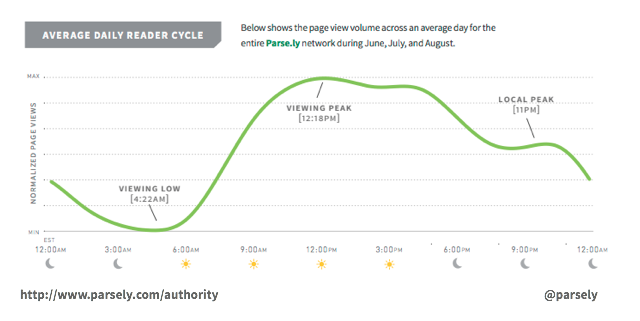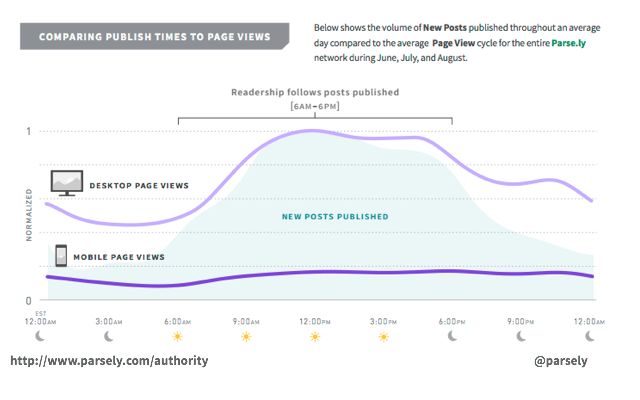Rethinking the Deadline in Digital Media
If you spend any time in marketing forums or classes, one goal becomes clear: marketers want to deliver the right message to the right person, at the right time.
As digital media teams compete for the attention of an over-saturated online audience, many of their actions begin to mirror that of the marketing world. Journalism as a service and an emphasis on developing relationships with individuals involves marketing principles like adding value to customers’ lives and empathizing with them.
Initiatives such as these embody marketers’ core goal to create the right message and wield it to drive loyalty amongst the right people. But what about the right time? What is the right time to reach audiences with your messages and how do you identify that time?
A Quick Detour: The History of Deadlines
The term “deadline” is rooted in a very literal interpretation: a perimeter line that if prisoners of war crossed said line, they risked being shot or killed by their captors. Dead. Line.
The business world soon adapted “deadline” for its own purposes. As it entered the journalism and news industry, “deadline” referred to a guideline on the printing plate for the presses. Anything that couldn’t fit was “beyond the deadline.” More recently of course, deadlines at publishing companies drove logistics aka backing into how long printing would take and so when copy would be due to editors.
Today the printing press no longer dictates when articles need to be filed. So, much like how online journalism’s volume and audience has been restructured in the last few years, perhaps editors must also restructure how they assign deadlines.
Status quo and inertia has kept many journalists inside the boundaries of what they’re used to, the familiarity of ending each day by filing evening deadlines or the excitement that your story is headed to page one in Sunday’s paper. Marketers consider many factors in order to determine timing when sharing content; what questions does your editorial team consider in the content creation and publishing process?
The Parse.ly Authority Report: Daily Reader Cycles
At Parse.ly, we often frame analytics questions by looking at existing actions of users. For our latest Authority Report, we wanted to know if there’s a “best” time to set a digital deadline. To do this, we looked at the average distribution of page views across 10 billion views in our network and normalized it.

We then compared that to when publishers are putting out articles and broke out mobile versus desktop readers. You can see from the graph below, that the two align closely in the morning. However, as our research shows, readers stay active much longer than new content is published.

If you take start to break down the data, patterns emerge based on different variables. For instance, if you take a look at the full report, you’ll see there are less views on a weekend overall, but that there’s a more even distribution. Mobile readership also functions differently than desktop reading (there’s a zoomed in version of the mobile cycle in the full report that highlights this).
The topics and coverage areas matter too. In our “Editor’s Guide to Digital Media,” we looked at websites by topic, and peak hours for audiences reading about sports concentrated late in the evening, especially on days with big games. See more in the white paper: The Editor’s Guide to Digital Media.
When we tell you what the right time is, you WON’T BELIEVE IT.
We’re happy to report that the right time isn’t as easy as saying, “the new digital deadline should be 3:00 p.m. on Tuesdays.” Any network-wide tip that becomes well-known often also becomes over-optimized, making the findings quickly ineffectual (think “You won’t believe” headlines, or Banner Ads).
However, you can find your own best digital deadlines by examining the readers you want to reach, and comparing their activity to the timing of your current posts. Here are some sample questions to ask:
- Are my deadlines set up to take my readers preferences into account?
- When are my typical readers on my site?
- Do they read different types of stories at different times?
- What kind of devices are they using at different times, and what does this say about what they’re doing, or what they’re interested in reading about?
Distributing your story at the right time also gives you the best chance to reach the right people who have a propensity to be loyal to your publication when given the content they want, when they want it. And that should be the new goal of digital deadlines.